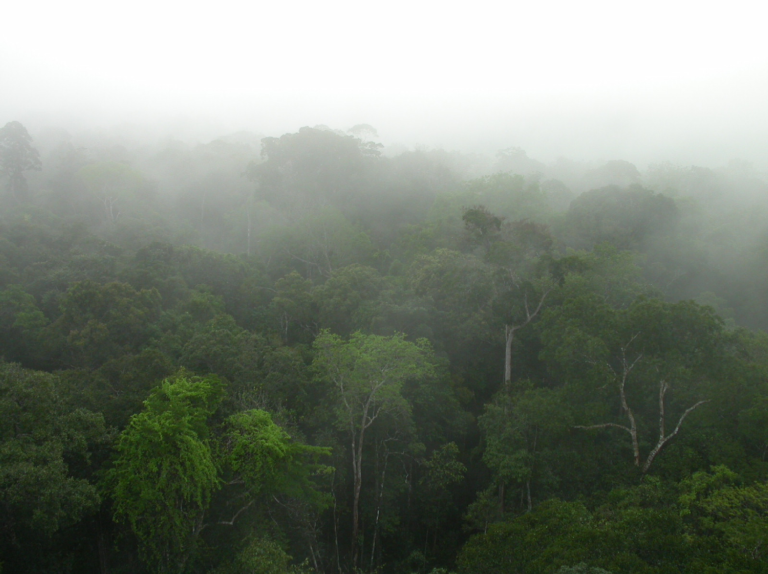
Nature publication predicts 10% decrease of biomass in forests if CO2 emissions continue unabated
In and around the tangled roots of the forest floor, fungi and bacteria grow with trees, exchanging nutrients for carbon in a vast, global marketplace. Researchers from Stanford University (US) worked alongside a team of over 200 scientists worldwide – including Prof. Hans ter Steege of Naturalis Biodiversity Center and the Vrije Universiteit Amsterdam – to map the most abundant symbiotic relationships based on 1.1 million measurements in the forest and 28,000 tree species. Their publication appeared in Nature on May 15, 2019.
The global study reveals which factors determine where different types of symbionts will flourish. This allows us to better understand how symbiotic partnerships structure the world’s forests and how they could be affected by a warming climate. The group used the new information to predict how symbioses might change by 2070 if carbon emissions continue unabated. This scenario resulted in a 10% reduction in the biomass of tree species, specifically those associated with fungi found in cooler regions.
“Our models predict massive changes to the symbiotic state of the world’s forests – changes that could affect the kind of climate your grandchildren are going to live in,” says Brian Steidinger, a researcher at Stanford and lead author of the paper.
Hidden to most observers, the symbiotic relationships between microbes and trees are highly diverse. The researchers focused primarily on three of the most common types of symbioses: arbuscular mycorrhizal fungi, ectomycorrhizal fungi and nitrogen-fixing bacteria. Each of these types encompasses thousands of species of fungi or bacteria that form unique partnerships with different tree species.
The data behind this study represents real trees from more than 70 countries and is the result of collaboration between over 200 researchers who speak different languages, study different ecosystems and confront different challenges. “There is information from more than 1.1 million forest plots in this dataset, and every one of those was measured by a person on the ground. Lengthy hikes, sweat, ticks, long days – so much effort went into that map,” explains Hans ter Steege. Ter Steege contributed to the study by sharing his datasets from Guyana, Suriname and Brazil.
The maps from this study will be made freely available so that the information can be used for new research in the future. The Stanford researchers intend to continue their project in order to better understand how climate change affects ecosystems. Hans ter Steege’s research group at Naturalis Biodiversity Center is also working on mapping biodiversity loss, climate change and ecosystem services, specifically within terrestrial forest systems in South America.
Naturalis Biodiversity Center is an internationally operating research center. More than 120 researchers and 200 guest researchers who are affiliated with Naturalis work to describe, understand and explain biodiversity and geodiversity. Their research is based on the Netherlands’ national collection of 42 million plants, animals, fossils and rocks, which has been built up over a span of two centuries. Naturalis will open its renovated building at the end of August 2019, with all research activities, the collection and the museum under one roof for the first time.